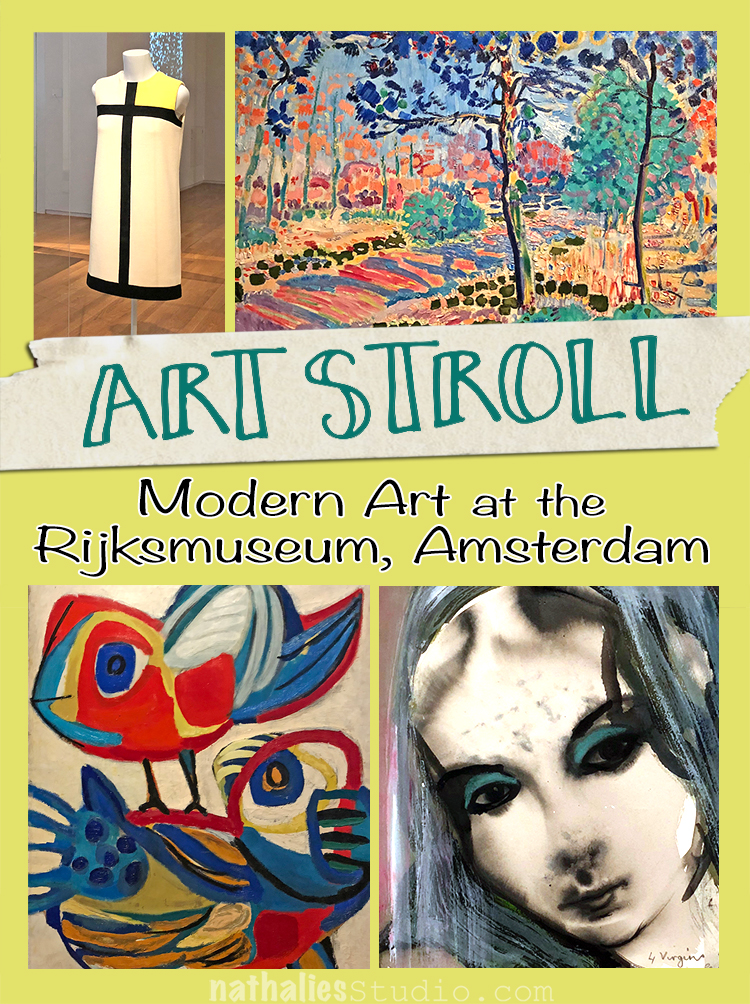
Last month I spend a lovely weekend in Amsterdam and since we haven’t been at the Rijksmuseum for a while we decided to go :) Now usually the Rijksmuseum is not really what you connect with Modern Art …the more the reason for us to check out the small collection a kind of hidden floor :)
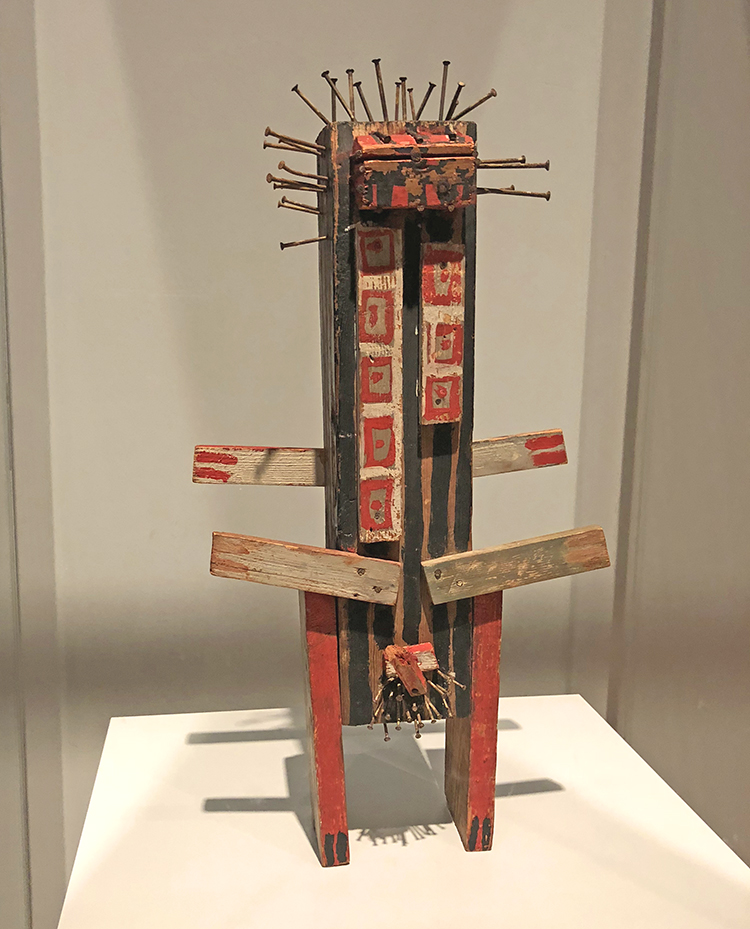
Standing Figure, Karel Appel, 1949 – wood, paint, metal
Shortly after the Second World War a new generation of young artists stepped into the limelight. With their unpolished and improvised painting and sculptures they celebrated their regained freedom after years of German occupation. Karel Appel looked at artifacts from Africa and Oceania. He thought they were exemplary models of the unspoiled creativity and drive that should form the basis fo art in a free society.
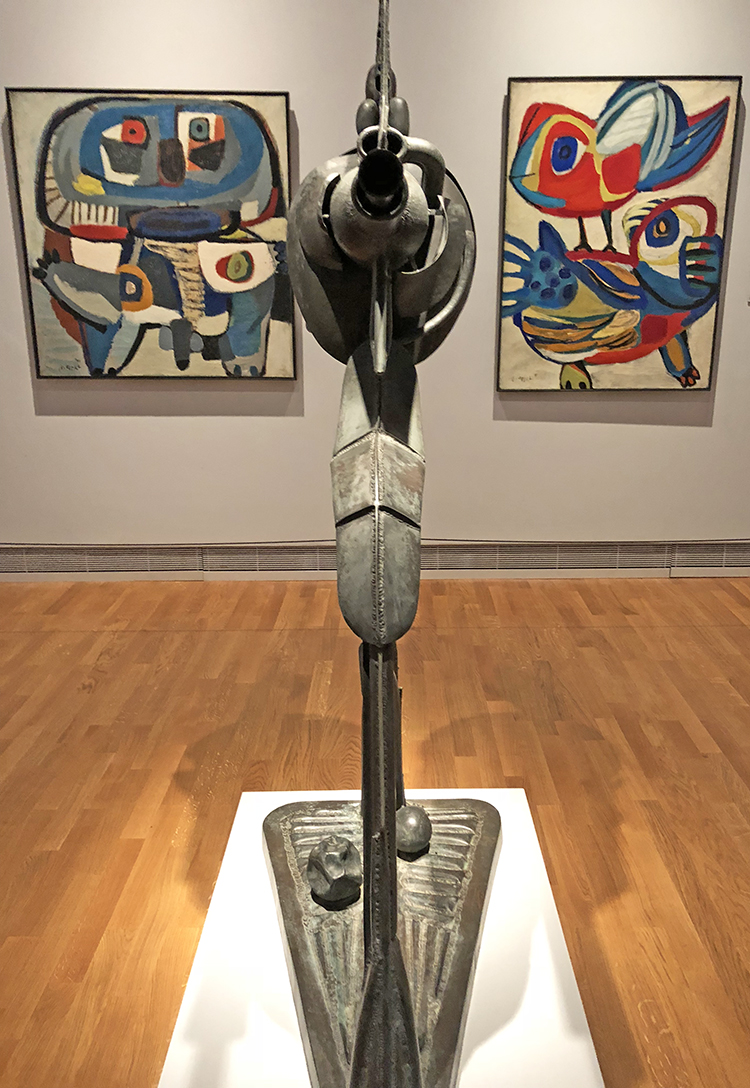
Below two paintings by Karel Appel

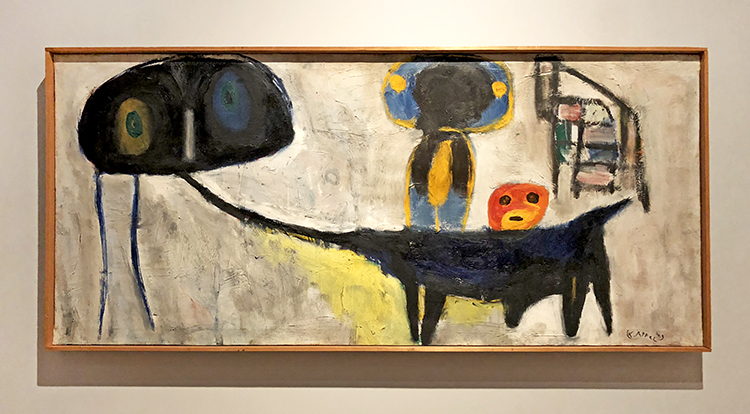
Child with Donkey (Kind met ezel), Karel Appel, 1949 – oil on canvas
In 1949 the smoldering eyes of Appel’s figures of children caused a great deal of discomfort among the public, The silent reproach of their gazes even led to his wall painting Questioning Children in the Amsterdam city hall being covered over. Appel began painting children after a trip through post-war Germany. The misery of the often orphaned, hungry, and begging war children made indelible impression on him.
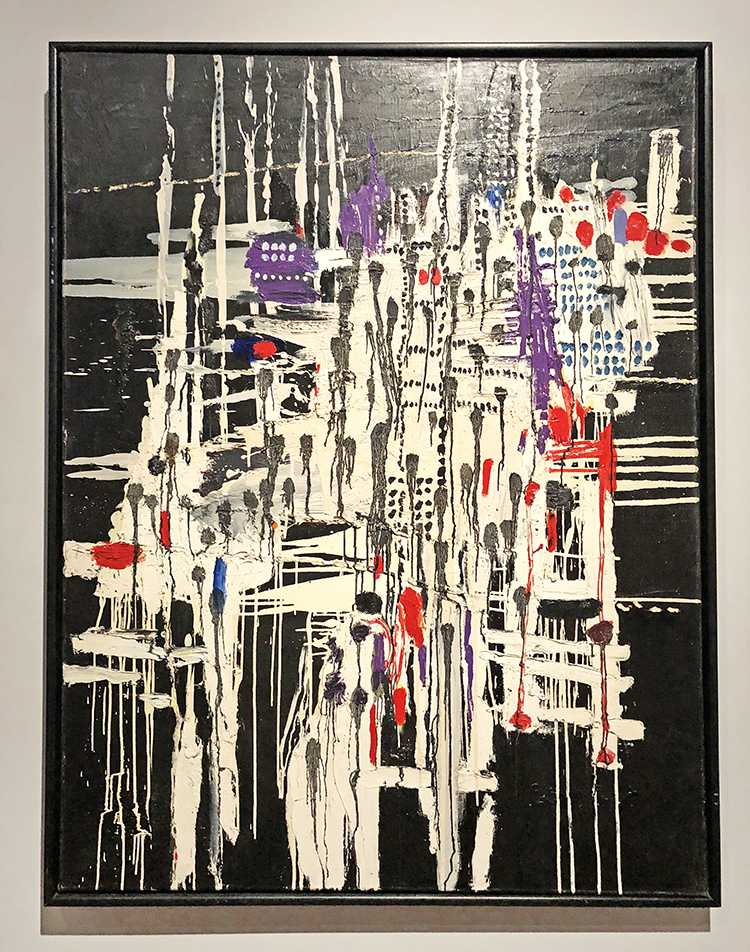
La Ville Noyèe (The Sunken City), Constant, 1956, oil on canvas
the title of this painting may refer to Atlantis, a beautiful and prosperous legendary island that was engulfed by the sea, according to Greek mythology. When Constant made this painting he was devising his own imaginary society: a city for the people of the future that he christened New Babylon.
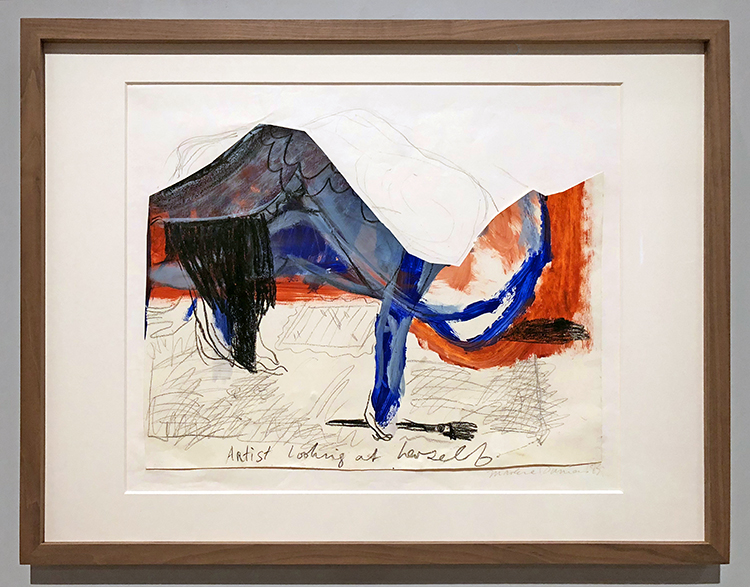
Artist Looking at Herself, Marlene Dumas 1983, gouache, acrylic paint, chalk, on paper
Eroticism and her role as a female artist are recurring themes in Dumas’ work. This portrait presents a paintress but whether it is Dumas herself is not clear. We see a women looking through spread legs into mirror under her. She olds a paintbrush in her left hand, as though she is painting the pictures at this very moment.
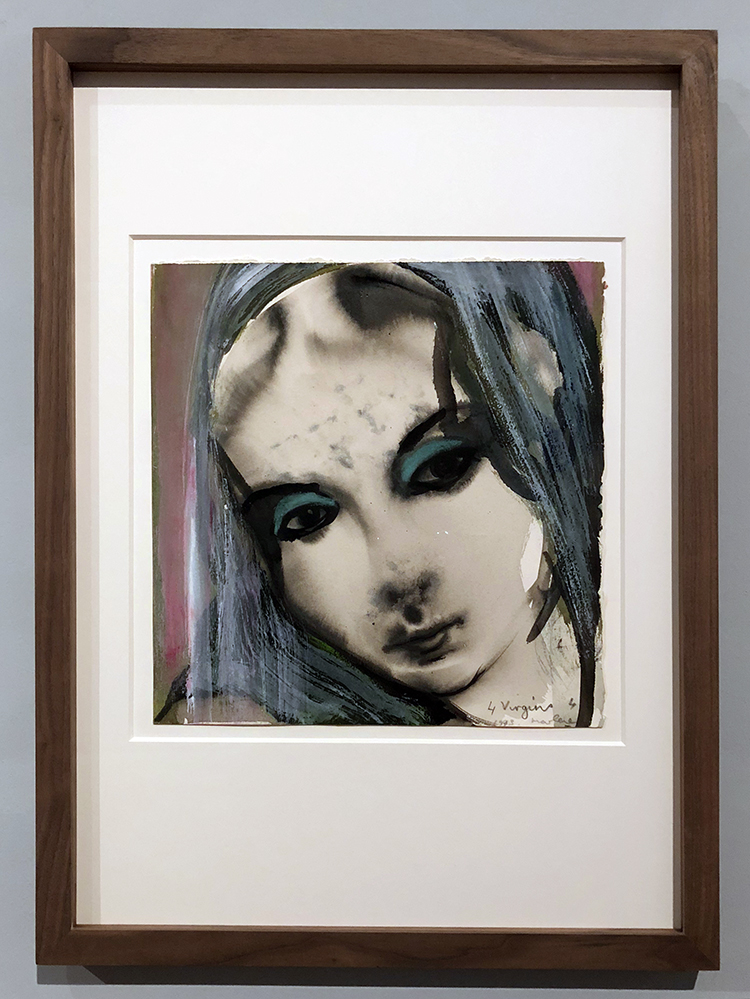
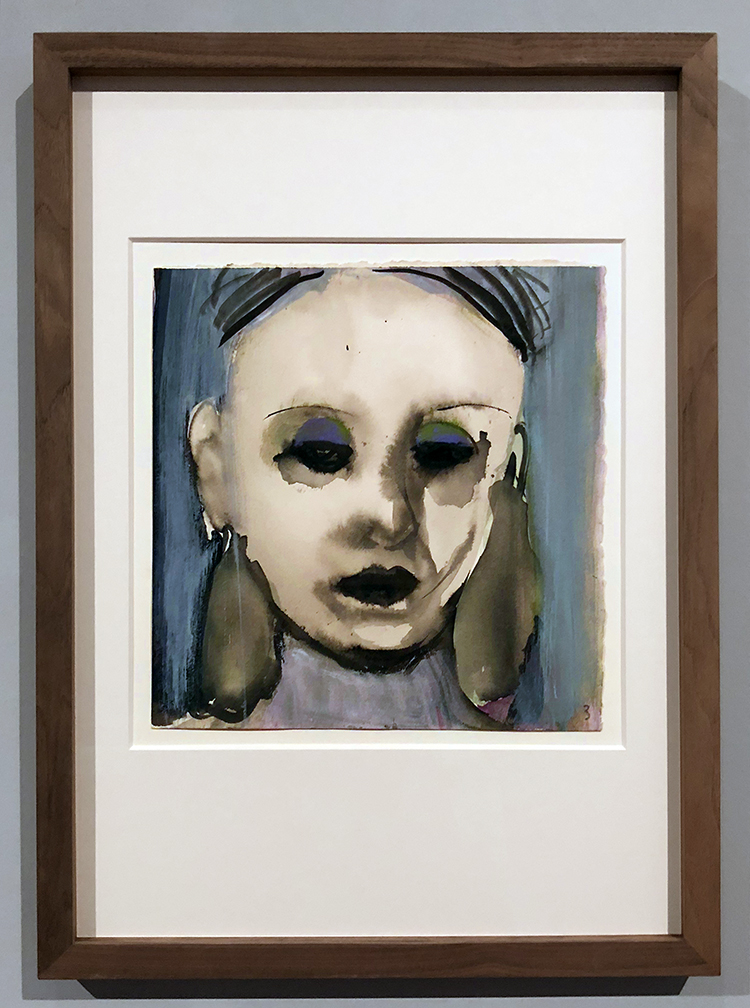
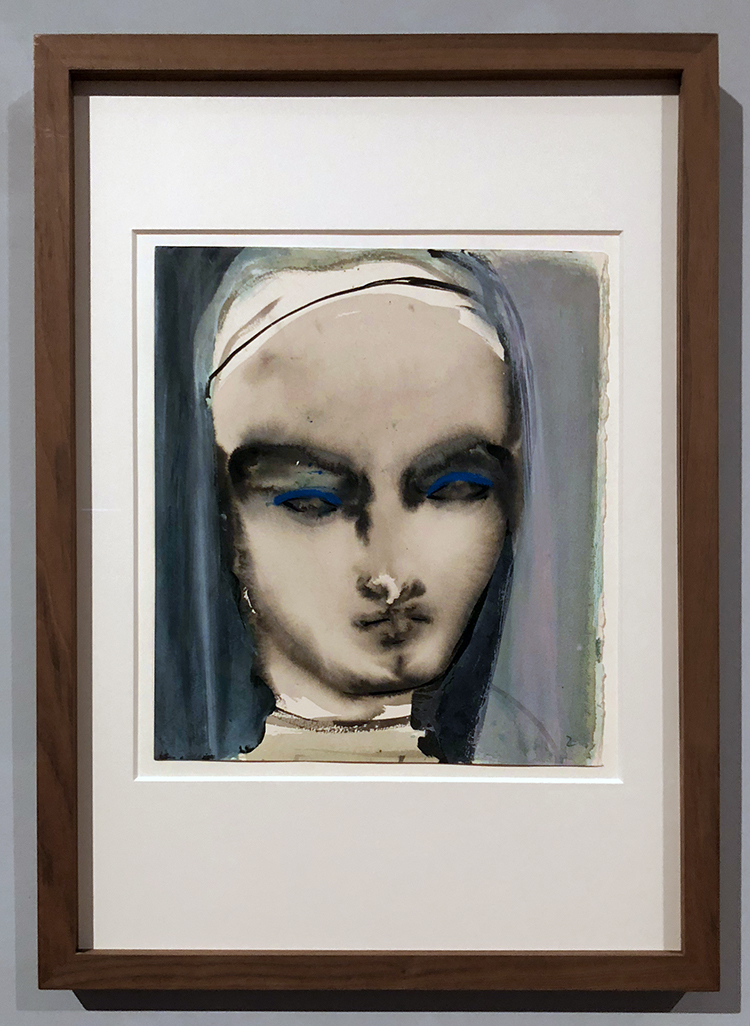
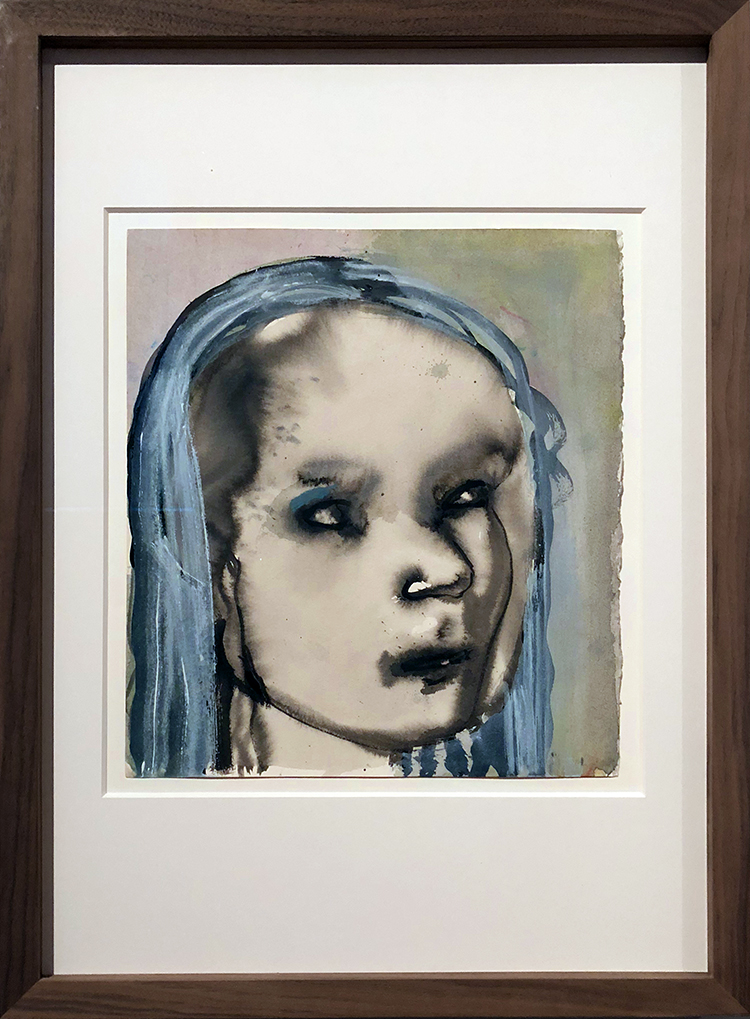
Four Virigitns (1-4), Marlene Dumas, 1993- gouache, indian ink
No identification is given for the four women portrayed here by Marlene Dumas. Can they be recognized as famous models, or are the randomly photographed women? That they are virgins is emphatically indicated in the title. Whether this definition applies solely to the women’s virginal stat or refers to their virtuousness is left up to the beholder by Dumas.
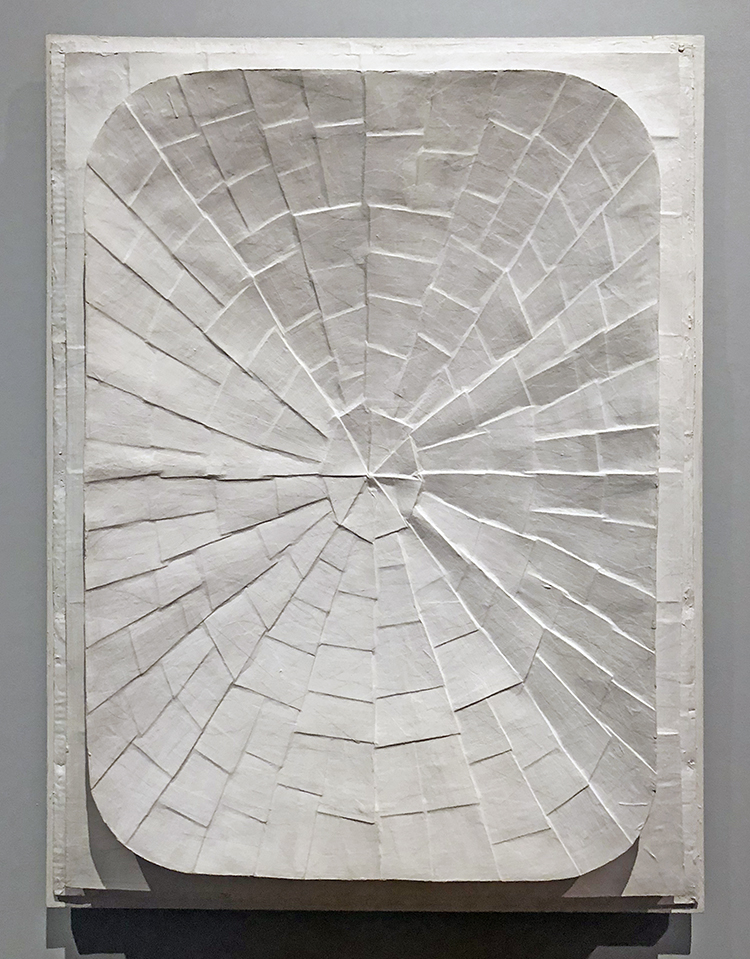
Dish Relief, Jan Schoonhooven, paper, cardboard, paint, wood
Like his 17th-century predecessor and fellow Delft artist Johannes Vermeer, Jan Schoonhoven was fascinated by light. His brilliant white reliefs are composed of a few basic forms, whose irregular surfaces make light visible. Here Schoonhoven pasted pieces of cardboard on top of each other to create a design of light and dark lines, which resembles light playing through a cobweb.
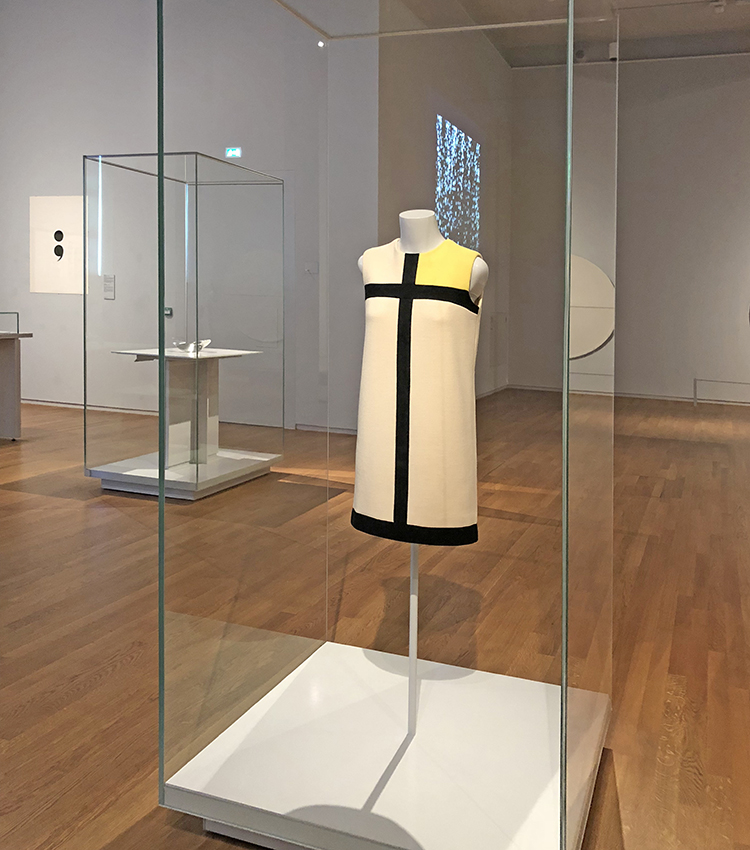
Mondrian Dress, Yves Saint Laurent, 1963, wool, silk lining
The abstract geometric visual language of De Stijl in the 1920s inspired a new generation of artists forty years later. The French couturier Yves Saint Laurent won international success with dresses inspired by the paintings of Piet Mondrian. This is the most elementary model of the six variants presented by Yves Saint Laurent in 1965.
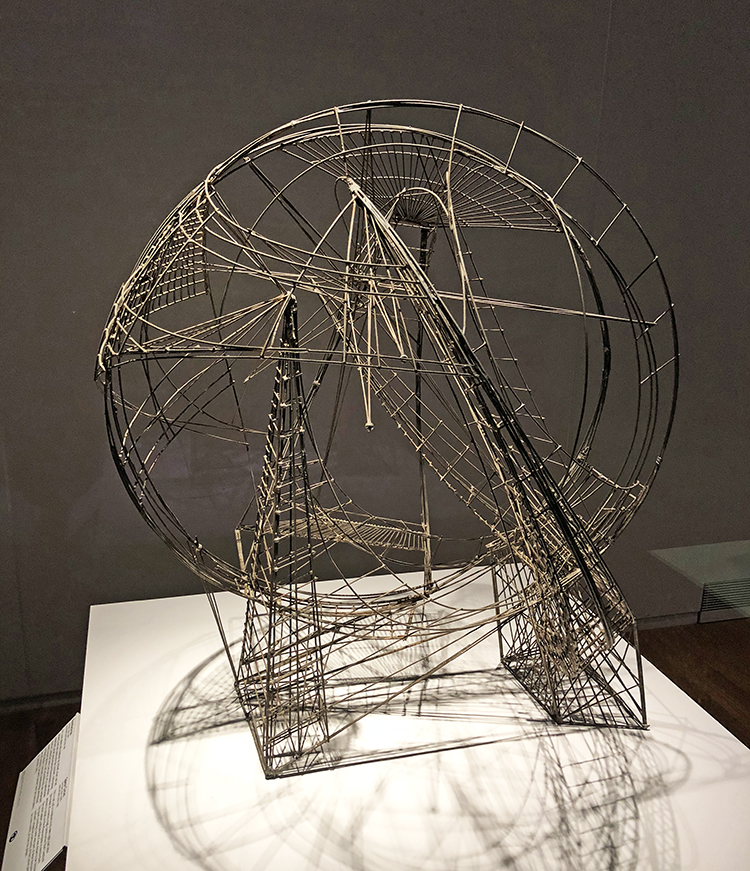
Space Circus, Constant, 1956 – 1961, soldred wire
This is not just a sculpture in its own right, but also the model of a meters-high construction that Constant wished to install on the Museumplein in Amsterdam. The small ladders indicate that it was meant to be climbed. This giant climbing frame was part of New Babylon, Constant’s imaginary metropolis of the future populated by homo ludens, or man the player.
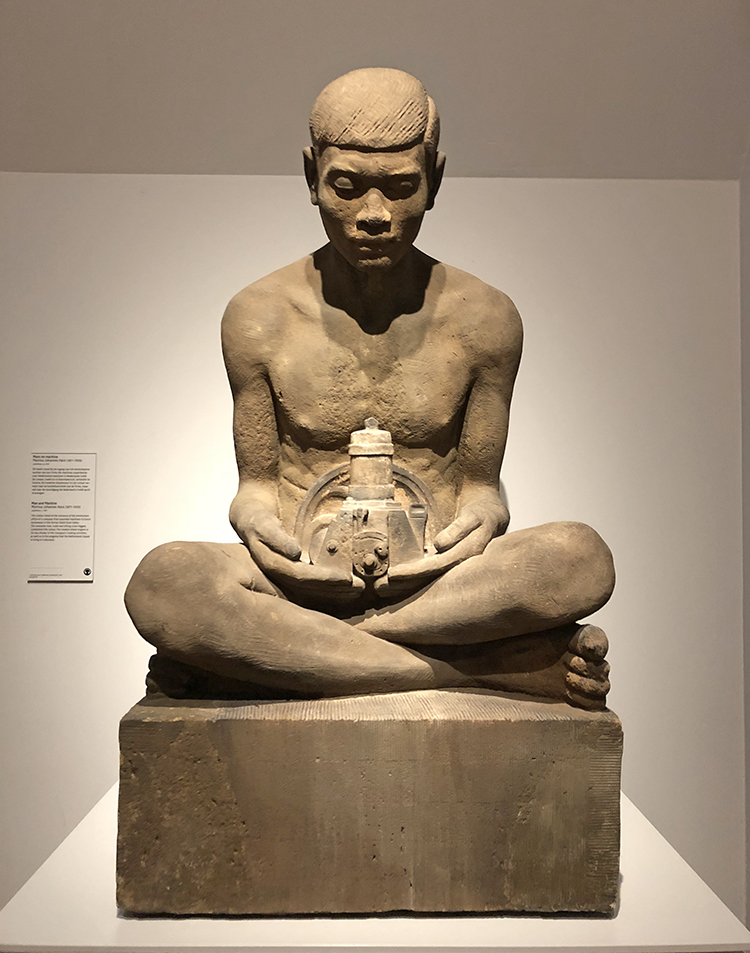
Man and Machine, Marinus Johannes Hack, c. 1913, sandstone
This statue stood at the entrance of the Amsterdam office of a company that exported machines to Dutch businesses in the former Dutch East Indies. The Javanese man, nude and sitting cross-legged, symbolizes the colony. The modern diesel engine in his lap alludes to the company’s trading activities, as well as to the progress that the Netherlands hoped to bring to Indonesia.
….mhhhh….

Portrait of Marie Jeanette de Lange, Jan Toorop, 1900, oil on canvas
Marie Jeanette de Lange chaired the Vereeniging voor Verbetering van Vrouwenkleding (Association for the Improvement of Women’s Clothing), which championed hygienic, loose-fitting, natural clothing that allowed women greater freedom of movement. In February 1900 she posed at home, dressed comfortably, for Jan Toorop. Using tiny dots of colourful paint, he created a sparkling portrait of a modern woman on the threshold of a new century.
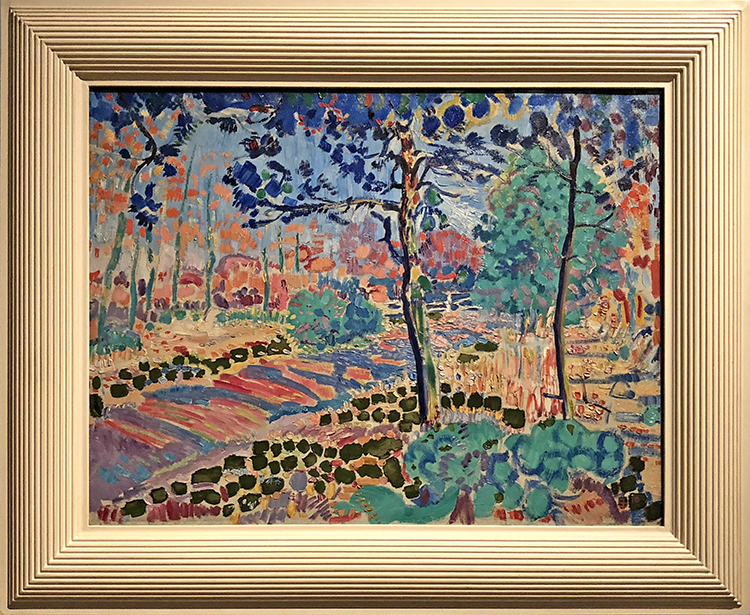
Road through the Woods, Jan Sluijters, 1910, oil on canvas
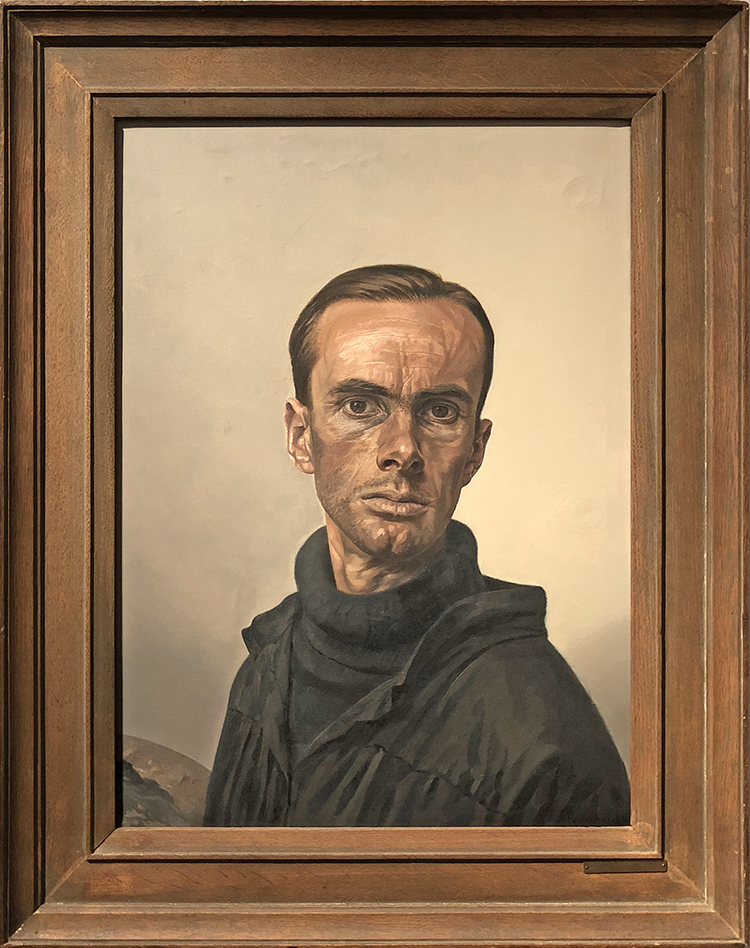
Self Portrait, Edgar Fernhout, 1945, oil on canvas
Edgar Fernhout often painted himself by way of practice, coolly and objectively as though he were an object. However this is not the case of this self portrait done in the last year of the Second world War; Five years of German occupation and a famine, the so called Hunger Winter 44-45, show in his gaze and gaunt face. After the war he abandoned realism and painted mostly abstract landscapes.
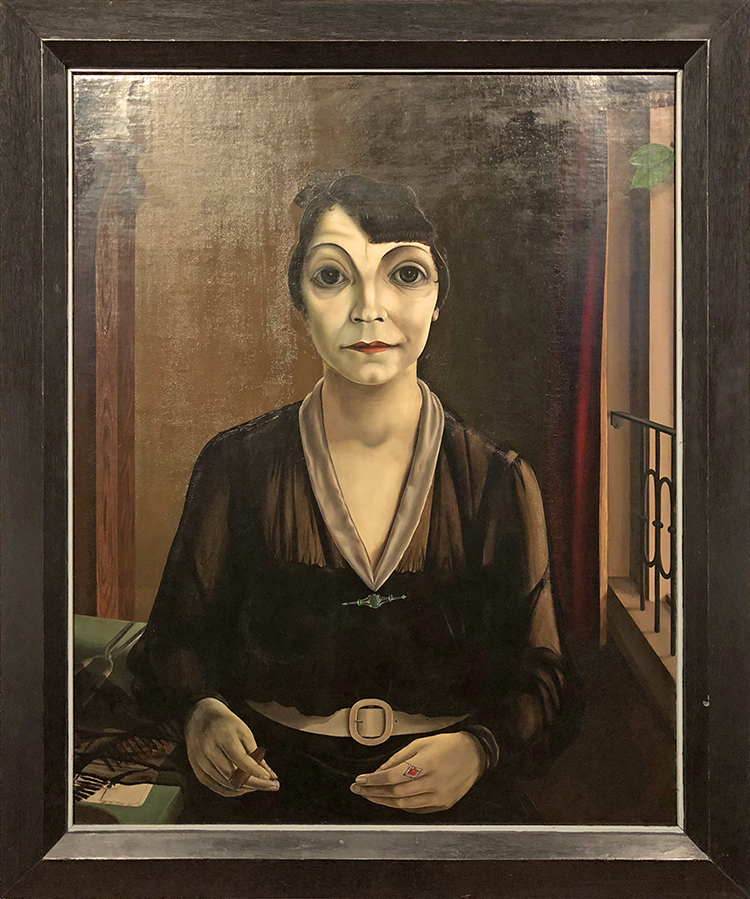
Mercedes de Barcelona, Pyke Koch, 1930, oil on canvas
the playing cards in this picture suggest that this woman is a fortune teller. Her large unreal eyes, too, seem to suggest some mysterious fate. In 1930-31 Koch painted three women of “questionable virtue”; in addition to the fortune teller, he portrayed a street girl and a fairground woman. He gave all three the facial features of the Danish film star Asta Nielsen, whom he so admired, with a broad mouth and high arched eyebrows.
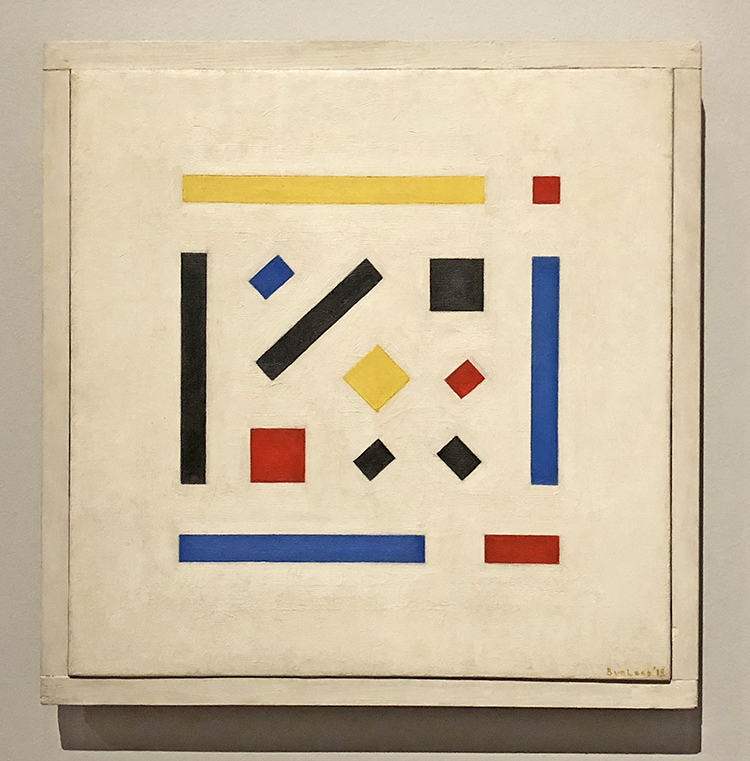
Composition, Bart van der Leck, 1918, oil on canvas
Bart van der Leck, one of the first artists to become involved with De Stijl magazine, limited his palette to primary colours – red, yellow and blue – along with neutral white, black and grey. He always took a recognisable design as his starting point, reducing this to a Composition of pure, geometrical forms. He described what he tried to achieve as ‘monumental clarity

Composition, Jozef Peeters, 1921, oil on canvas
As editor of the cultural magazine Het Overzicht Jozef Peters maintained close contact with other pioneers of Abstract art, such as the Dutch artists affiliated with De Stijl journal as well as up-and-coming talents including Carel Willink. Although Peeters championed pure Abstract art divorced from reality, his daughter later wrote that the Paris Underground was the inspiration for this Composition

Composition Liebe (Love) Carel Willink, 1923, oil on canvas
In Berlin of the 1920s the disillusionment of a lost war (1914-1918) was drowned in drink, lust, and love. However, art and culture also flourished as never before. In this melting pot the young art student Carel Willink soaked up the influences of Italian Futurists, Russian Constructivists, French Cubists and German Dadaists like a sponge. All of these styles reverberate in this painting, in which figures merge in the lamplight of the metropolis.
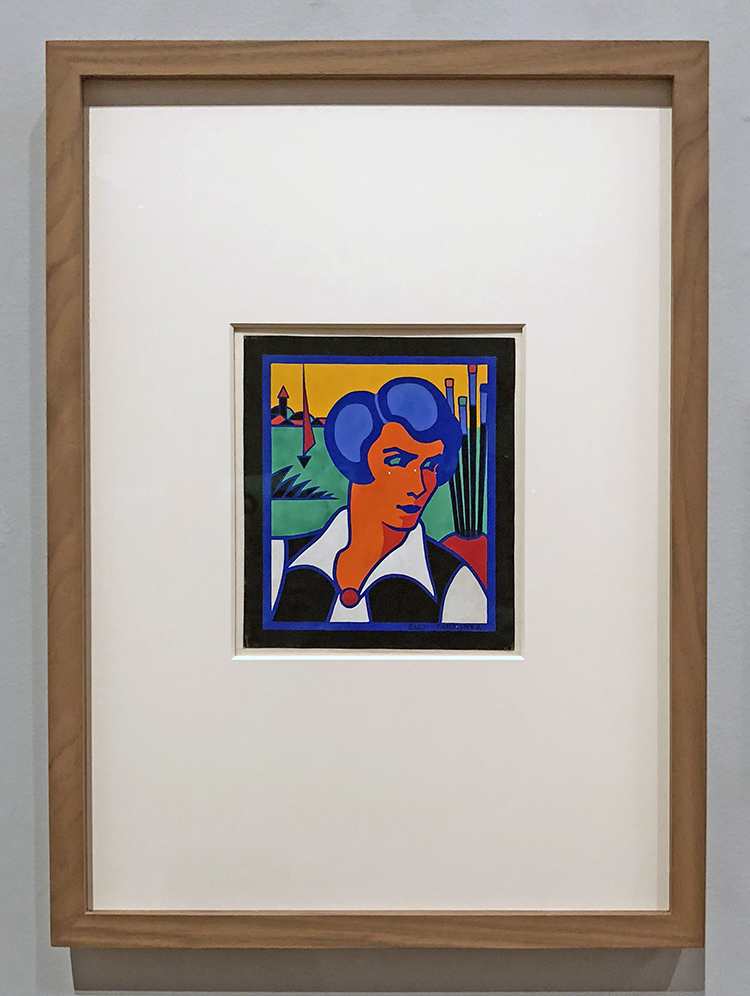
Self Portrait , Elly Tamminga, ca. 1920-55
Elly Tamminga peers at the subject she is painting outside the picture plane. The paintbrushes in the vase are her tools. The sailing boat of the silhouetted village with a church tower on the embankment behind her are small and therefore farther away in the distance. Atmospheric perspective is avoided, however and volume is suggested only by the two shades of red in her face and blue in her hair.
It was a really interesting art stroll through Modern Art – and I loved getting introduced to some new to me but well known Dutch Artists as well. Hope you enjoyed this Art Stroll as well :)
And if you missed my Summer Sizzler sale, don’t worry you can still save $$ on my stencils over at the big Mary Beth Birthday sale at StencilGirl! Use the coupon code MBS14 to save 14% off, now through July 8th at 11:59pm CST.

Receive 14% OFF all my StencilGirl stencil designs HERE!
Use code: MBS14
$100+ orders** CHOOSE 1 FREE Large STENCIL***
***You MUST put the L### in the comment box at checkout. Sorry, no exceptions.
**6 of the same size 10% discount is applied first! $100+ orders post-discount.
*Sale does not apply to wholesale accounts or StencilClub membership.
The stencil sale begins July 6th and ends July 8th at 11:59 p.m. CST
SaveSave
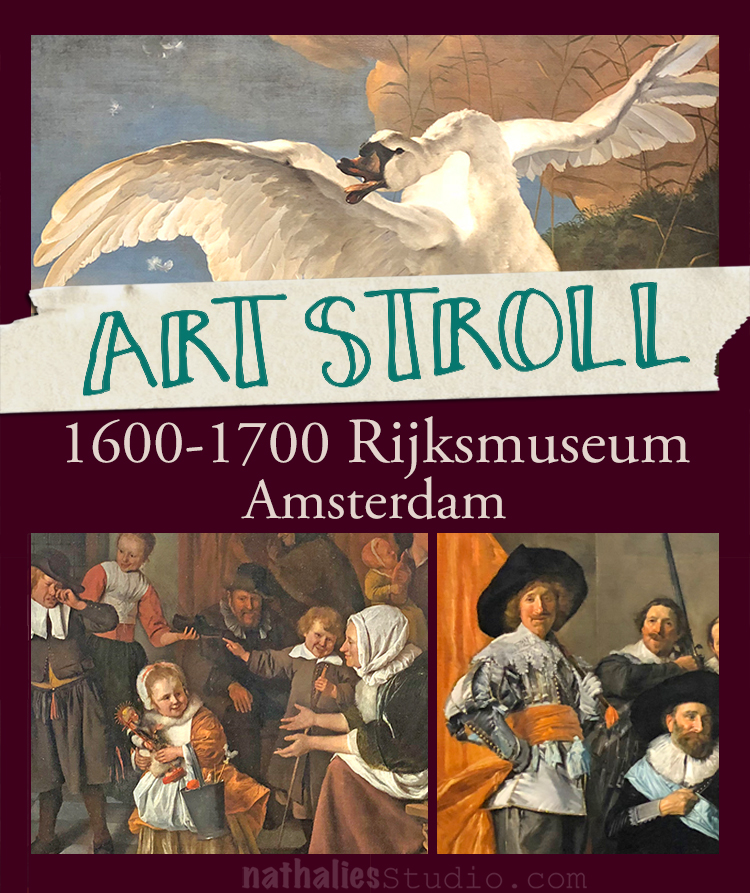
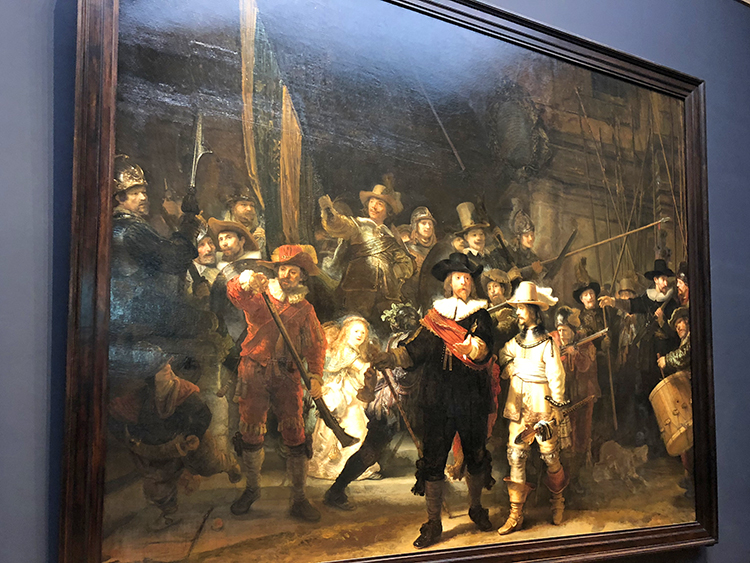
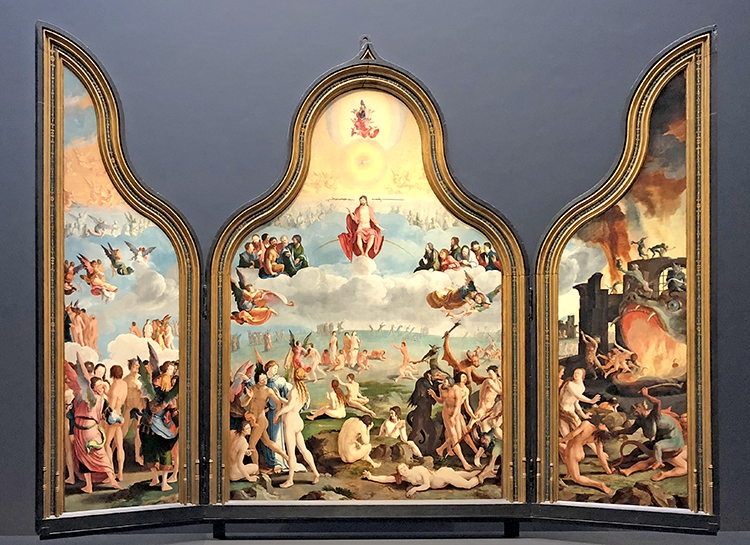
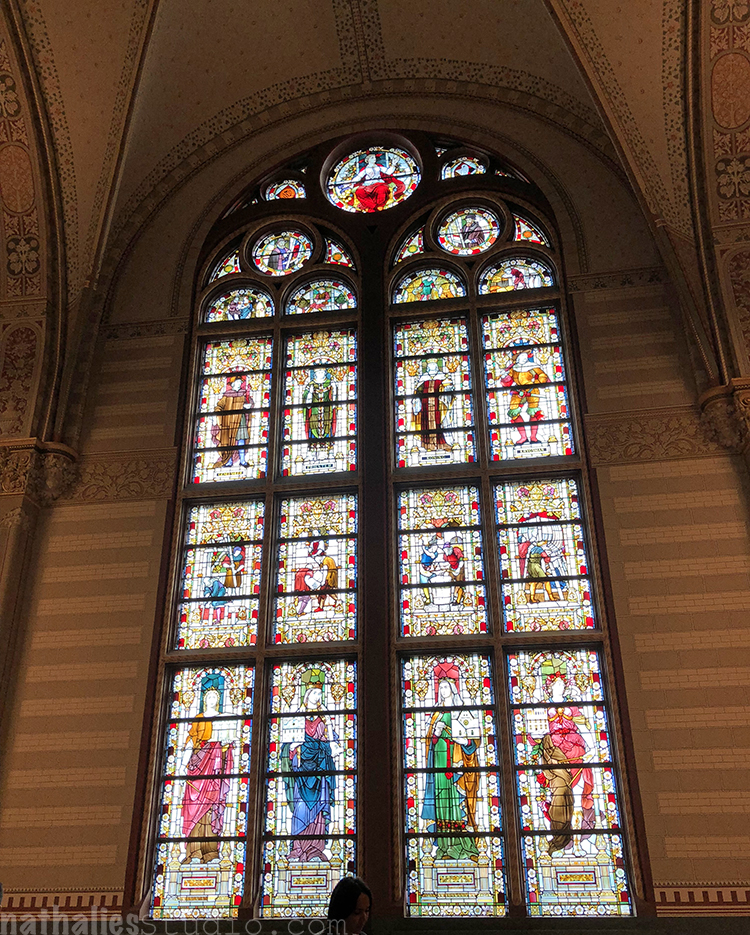
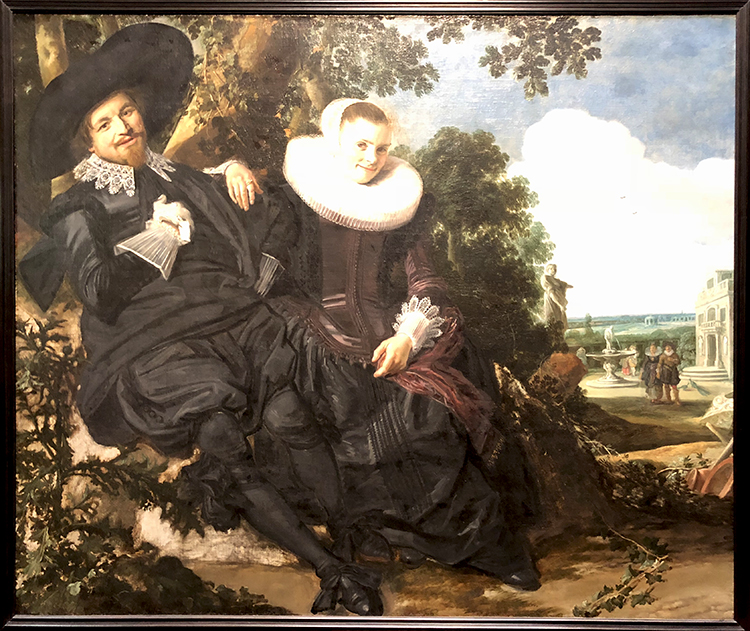


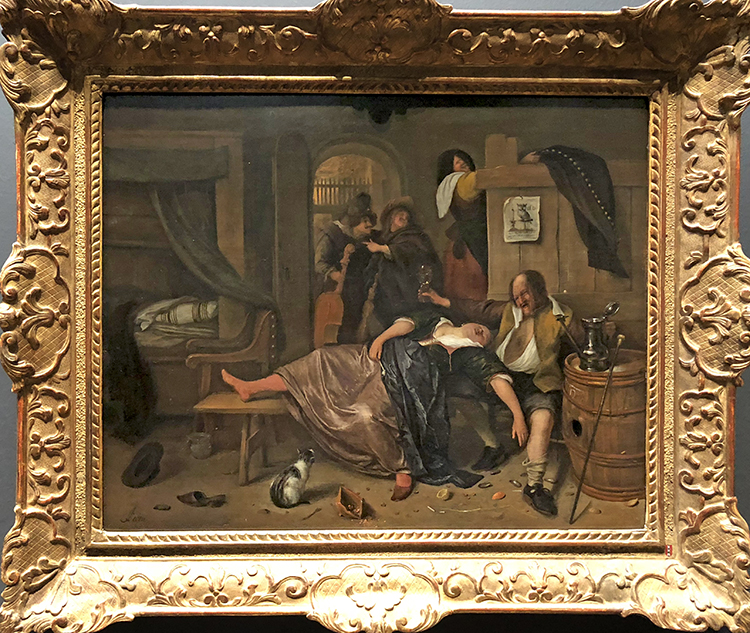
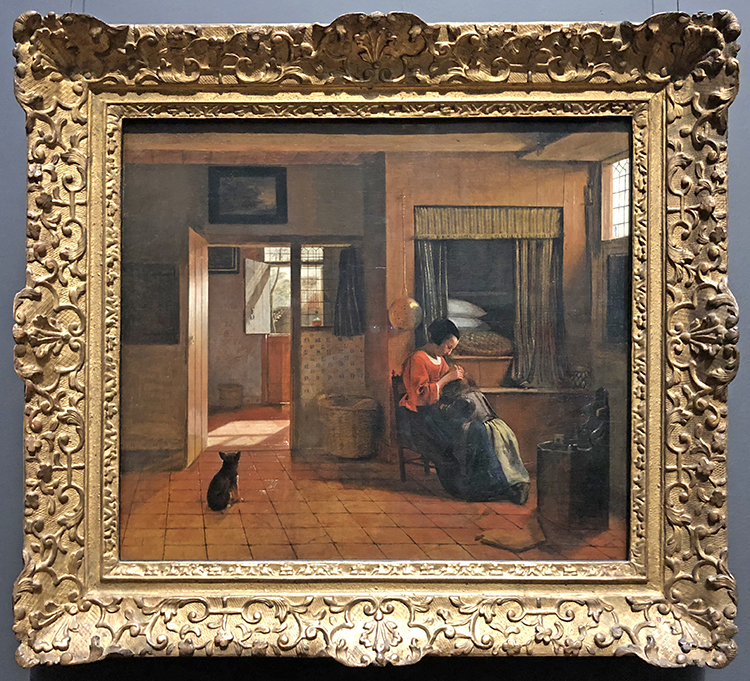
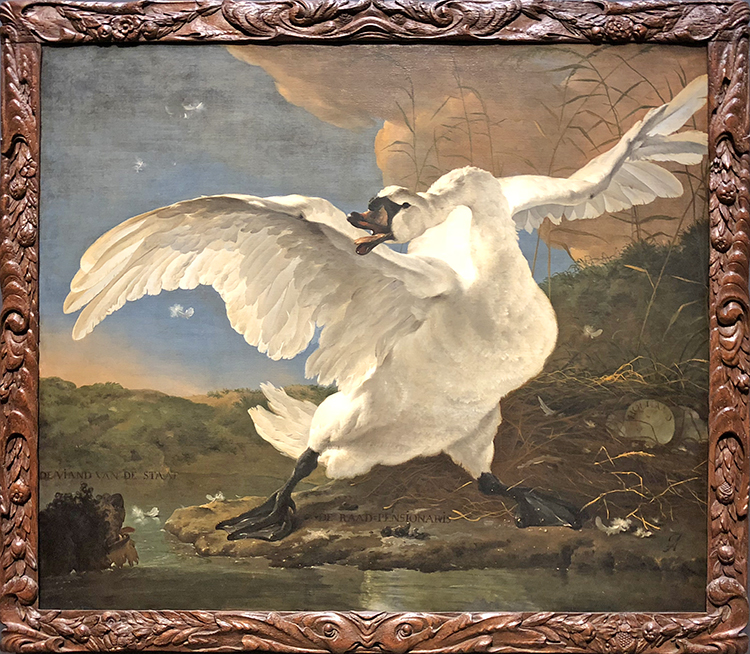
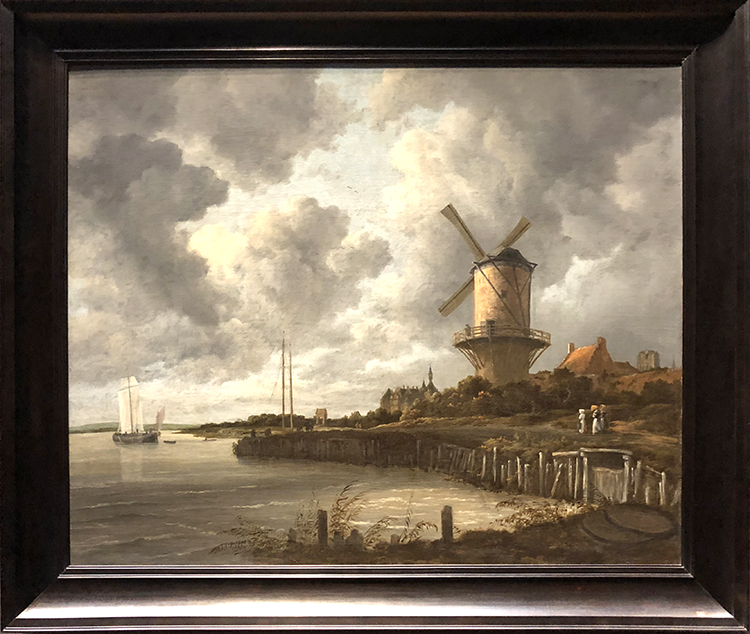
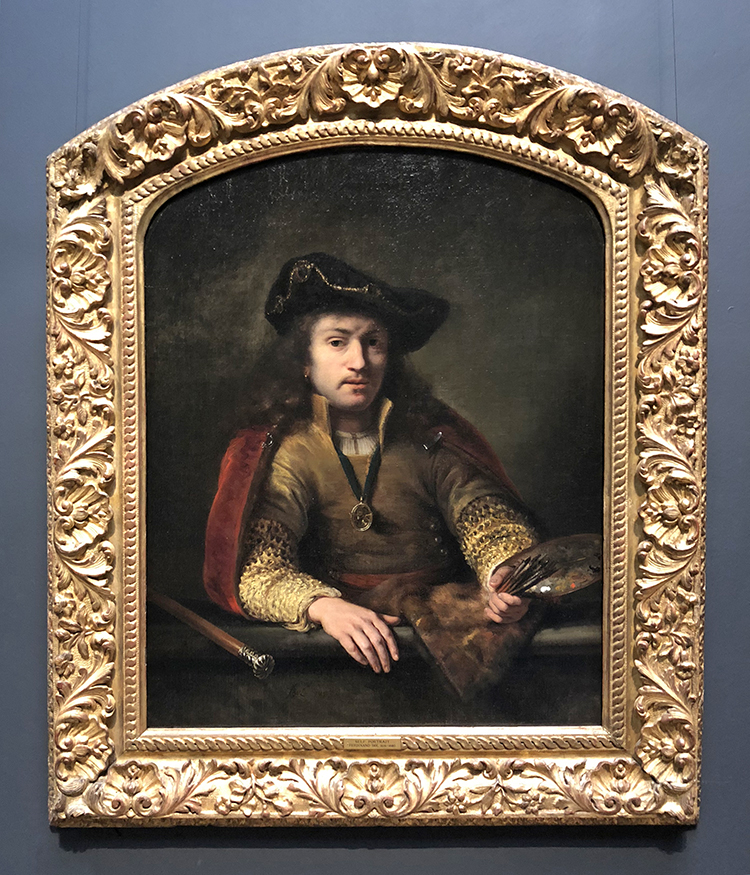


























Comments (4)
Laura Weed
| #
I was blessed to visit the Rijksmuseum in the 1980’s (while the rest of my tour did Anne Frank’s House which was just too much for me) and I was absolutely blown away at the size of some of those paintings I had only ever seen in books before. What an immersive experience. Rembrandt is one of my favorites, and I love looking at the expressions on the faces of the people in the backgrounds. So glad you’re sharing this amazing place!
Reply
nathalie-kalbach
| #
It is a gorgeous museum and I am glad we went back again – there is just so much to see :)
Reply
Sue Clarke
| #
Portrait of a Couple is just delightful and so unusual for that time period.
I don’t believe for a minute that you got coal. LOL
The frame around the Swan is gorgeous.
Reply
nathalie-kalbach
| #
hahaha oh I did get coal- believe me ;)
Reply